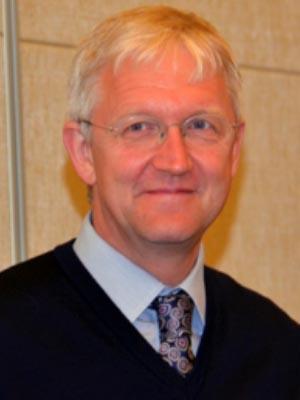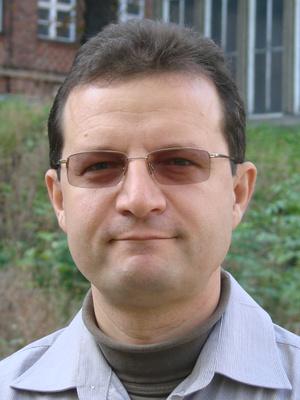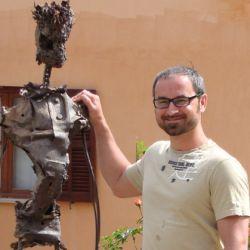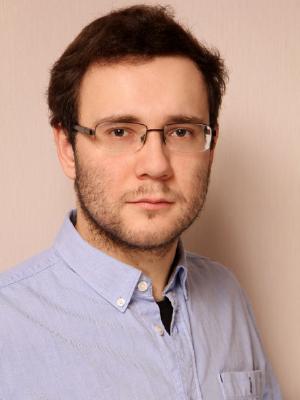Technische Universität Dresden (TUD)
Technische Universität Dresden (TUD) is a full-scale University with 14 faculties, covering a wide range of fields in science and engineering.
The group of Prof. Eychmüller belongs to the Department of Physical Chemistry of the School of Science. It unites chemists working in the area of colloidal synthesis of various nanomaterials, their characterization, functionalization, assembly, integration with other functional materials, and application in different fields, including catalysis, light emitting diodes, thermoelectrics, sensors, and field effect transistors.
Relevant projects/activities:
We synthesize colloidal semiconductor (II-VI, IV-VI, III-V, oxides) and metal nanoparticles in solution using common wet chemistry laboratory equipment. In particular, we work with metal chalcogenide semiconductor nanocrystals (otherwise known as quantum dots), made of ZnSe, CdS, CdTe, CdSe, HgTe, InP, PbS, PbSe, Cu(Ag)-In-S, as well as their core-shells, double-wells and alloys, prepared both in aqueous media and in organic solvents. These quantum dots possess strong photoluminescence covering almost the whole UV-Vis-NIR spectral region, depending on the particle composition and size. We prepare composites of quantum dots with various functional materials (polymers, inorganic matrices), which further can be processed in the forms of thin films and bulk solids. The hybrid materials obtained are applied in fabrication of LEDs and field effect transistors. The results of our investigations are summarized in more than 200 papers published by the group in international journals during the last 10 years. We are also experienced in collaborating within several large EU projects (FUNLIGHT, STABILIGHT, INNOVASOL, GLOBASOL, NoE PHOREMOST and Nanophotonics4Energy).
Significant infrastructure:
We have a full set of equipment necessary to characterize our materials including optical spectroscopy (absorption, steady-state and time-resolved photoluminescence, FTIR, Raman), transmission and scanning electron microscopy, thermogravimetric and powder X-ray diffraction analyses, various electrochemical methods.
Relevant publications:
- Rogach, A. L.; Gaponik, N.; Lupton, J. M.; Bertoni, C.; Gallardo, D. E.; Dunn, S.; Li Pira, N.; Paderi, M.; Repetto, P.; Romanov, S. G.; O'Dwyer, C.; Sotomayor Torres, C. M.; Eychmüller, A., Light-Emitting Diodes with Semiconductor Nanocrystals. Angew. Chem. Int. Ed. 2008, 47, 6538-6549.
- Demir, H. V.; Nizamoglu, S.; Erdem, T.; Mutlugun, E.; Gaponik, N.; Eychmüller, A., Quantum Dot Integrated LEDs Using Photonic and Excitonic Color Conversion. Nano Today 2011, 6, 632-647.
- Lesnyak, V.; Gaponik, N.; Eychmüller, A., Colloidal Semiconductor Nanocrystals: The Aqueous Approach. Chem. Soc. Rev. 2013, 42, 2905-2929.
- Adam, M.; Erdem, T.; Stachowski, G. M.; Soran-Erdem, Z.; Lox, J. F. L.; Bauer, C.; Poppe, J.; Demir, H. V.; Gaponik, N.; Eychmüller, A., Implementation of High-Quality Warm-White Light-Emitting Diodes by a Model-Experimental Feedback Approach Using Quantum Dot–Salt Mixed Crystals. ACS Appl. Mater. Interfaces 2015, 7, 23364-23371.
- Adam, M.; Gaponik, N.; Eychmüller, A.; Erdem, T.; Soran-Erdem, Z.; Demir, H. V., Colloidal Nanocrystals Embedded in Macrocrystals: Methods and Applications. J. Phys. Chem. Lett. 2016, 7, 4117-4123.
- Benad, A.; Guhrenz, C.; Bauer, C.; Eichler, F.; Adam, M.; Ziegler, C.; Gaponik, N.; Eychmüller, A., Cold Flow as Versatile Approach for Stable and Highly Luminescent Quantum Dot–Salt Composites. ACS Appl. Mater. Interfaces 2016, 8, 21570-21575.
- Saldanha, P. L.; Lesnyak, V.; Manna, L., Large Scale Syntheses of Colloidal Nanomaterials. Nano Today 2017, 12, 46-63.
- Lesyuk, R.; Cai, B.; Reuter, U.; Gaponik, N.; Popovych, D.; Lesnyak, V., Quantum-Dot-in-Polymer Composites via Advanced Surface Engineering. Small Methods 2017, 1, 1700189.
- Sayevich, V.; Guhrenz, C.; Dzhagan, V. M.; Sin, M.; Werheid, M.; Cai, B.; Borchardt, L.; Widmer, J.; Zahn, D. R. T.; Brunner, E.; Lesnyak, V.; Gaponik, N.; Eychmüller, A., Hybrid N-Butylamine-Based Ligands for Switching the Colloidal Solubility and Regimentation of Inorganic-Capped Nanocrystals. ACS Nano 2017, 11, 1559-1571.
- Slejko, E. A.; Sayevich, V.; Cai, B.; Gaponik, N.; Lughi, V.; Lesnyak, V.; Eychmüller, A., Precise Engineering of Nanocrystal Shells via Colloidal Atomic Layer Deposition. Chem. Mater. 2017, 29, 8111-8118.
- Raevskaya, A.; Lesnyak, V.; Haubold, D.; Dzhagan, V.; Stroyuk, O.; Gaponik, N.; Zahn, D. R. T.; Eychmüller, A., A Fine Size Selection of Brightly Luminescent Water-Soluble Ag–In–S and Ag–In–S/ZnS Quantum Dots. J. Phys. Chem. C 2017, 121, 9032-9042.
Key personnel involved:

Alexander, EYCHMÜLLER
started his academic career in Göttingen with studies of physics (Ph.D., MPI for Biophysical Chemistry, Prof. A. Weller and Dr. K. H. Grellmann) and continued at UCLA (postdoc with Prof. M. A. El-Sayed), Berlin (HMI with Prof. A. Henglein), and the University of Hamburg (with Prof. H. Weller). Since 2005 he holds the chair in Physical Chemistry at TU Dresden. His research interests include the synthesis and characterization of nanosized objects and their photophysical, electrochemical, and structural properties.
Nikolai, GAPONIK
obtained his Ph.D. (2000) from the Belarusian State University working on the photoelectrochemistry of the composite materials based on conducting polymers and nanocrystals. He worked as visiting scientist at the LMU Munich with Prof. J. Feldmann in 2000 and later he joined the group of Prof. H. Weller at the University of Hamburg as a researcher. In August 2005, he moved with Prof. A. Eychmüller to TU Dresden. He made his habilitation at the TU Dresden (2013) and was nominated to ad personam professor in 2014. He was awarded with DAAD (2000), IKERBASQUE (2011) and GIAN (2017) international Fellowships. His current research interest focuses on the advanced assembly and applications of semiconductor and metal nanocrystals. He is an author of more than 200 articles in international journals
Vladimir, LESNYAK
received his Ph.D. degree in chemistry (2005) from the Belarusian State University (Minsk, Belarus). PhD studies were followed by a post-doctoral research at the TU Dresden (Germany) in the group of Prof. A. Eychmüller. Thereafter, he received a Marie Curie fellowship and worked at the Istituto Italiano di Tecnologia (Genoa, Italy) in the group of Prof. L. Manna. Currently he is a senior research scientist at the TU Dresden. His research focuses on the synthesis, assembly and applications of colloidal nanomaterials.
Anatol, PRUDNIKAU
received a Ph.D. degree in Physical Chemistry from the Belarusian State University in 2017. His thesis was focused on the synthesis of quantum-sized semiconductor nanocrystals with controlled shape, size with subsequent investigation of their properties that are useful for practical applications in optics and optoelectronics. He currently works as a postdoc at the TU Dresden.
How to get the lab:
How to get to the Physical Chemistry Department, Bergstraße 66b, 01062 Dresden Contact.
TRAIN + BUS (TRAM): take the local train (S-Bahn) number 2 to Dresden Central Station (Dresden Hauptbahnhof). Trains run every 30 minutes between the airport and Dresden Central Station. From the Central Station it takes 15‒20 minutes to reach the Department by foot. Alternatively, you may take Tram 3 (direction “Coschütz”) or Tram 8 (direction “Südvorstad”) to the stop “Nürnberger Platz”, or Bus 66 (direction “Freital / Mockritz”) to the stop “Technische Universität”.
TAXI: the distance is approximately 12 km, the fare is about € 25‒30.















